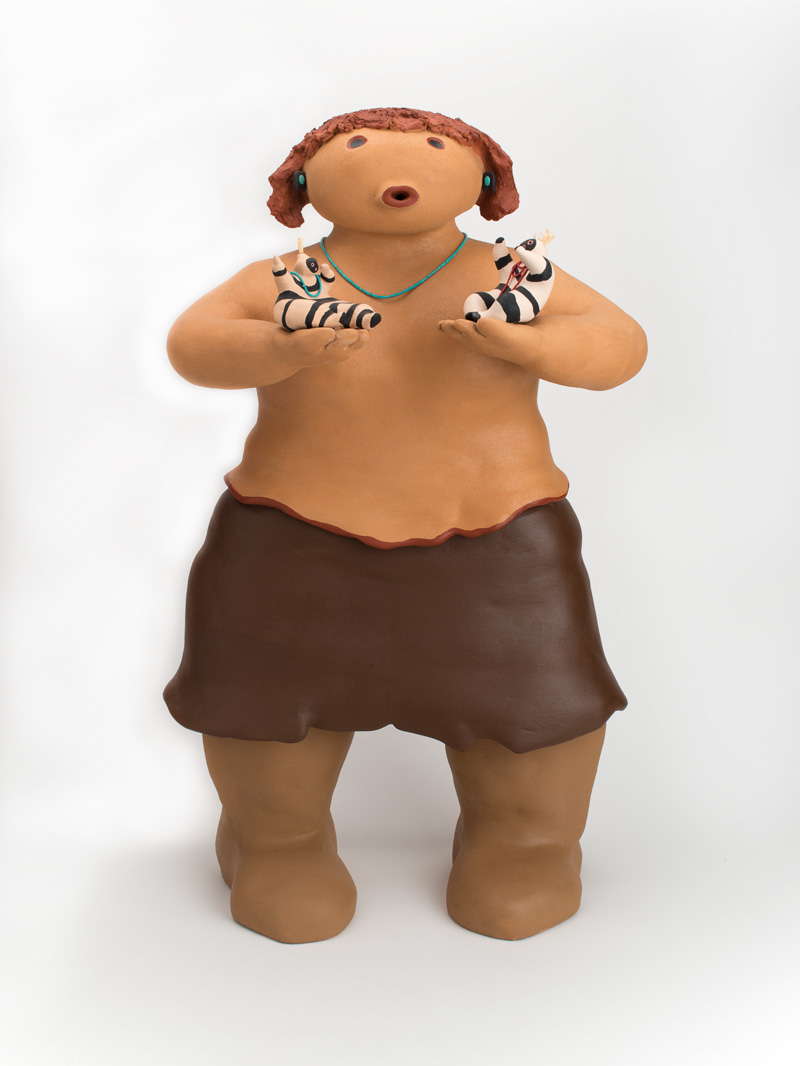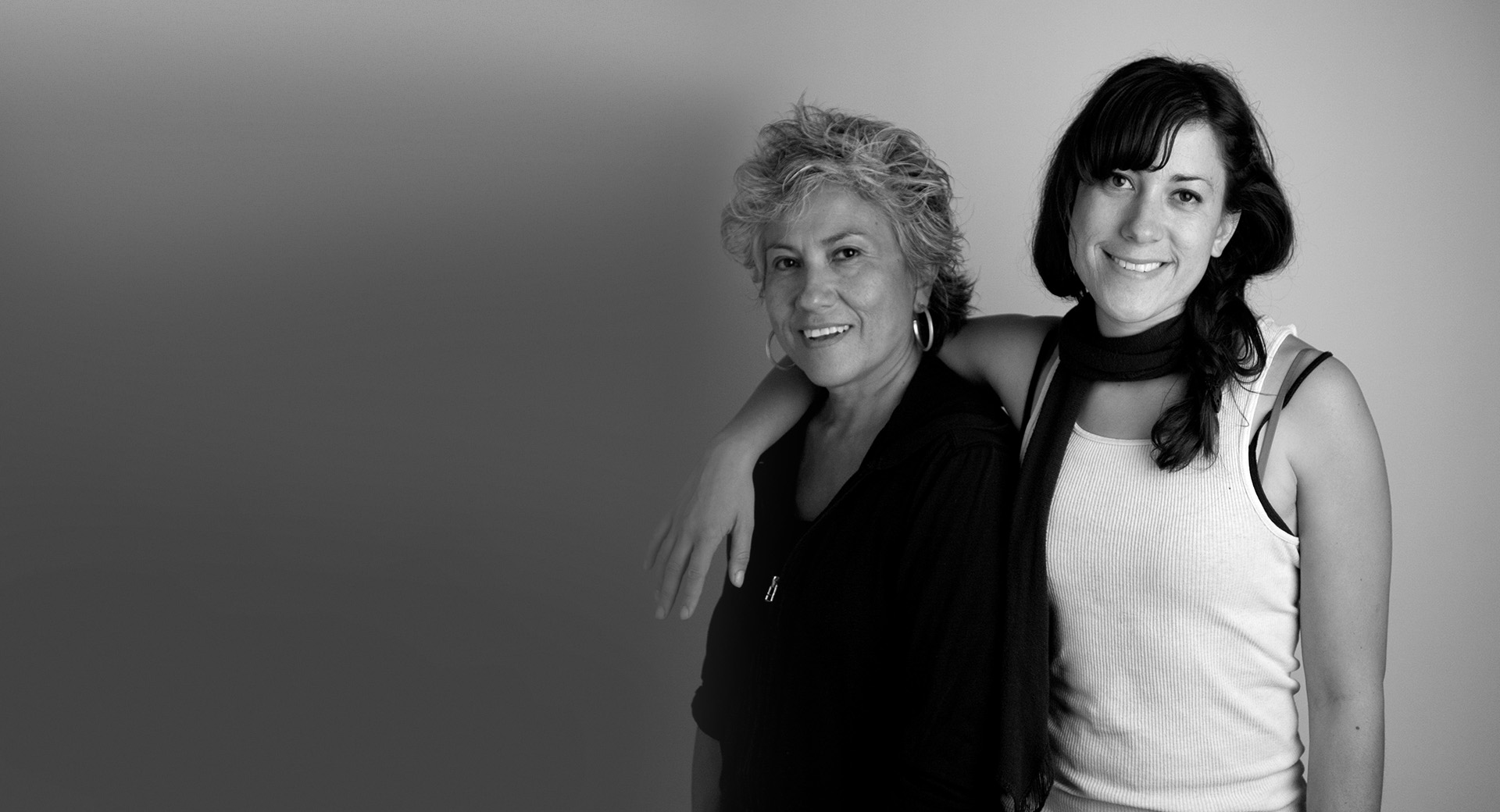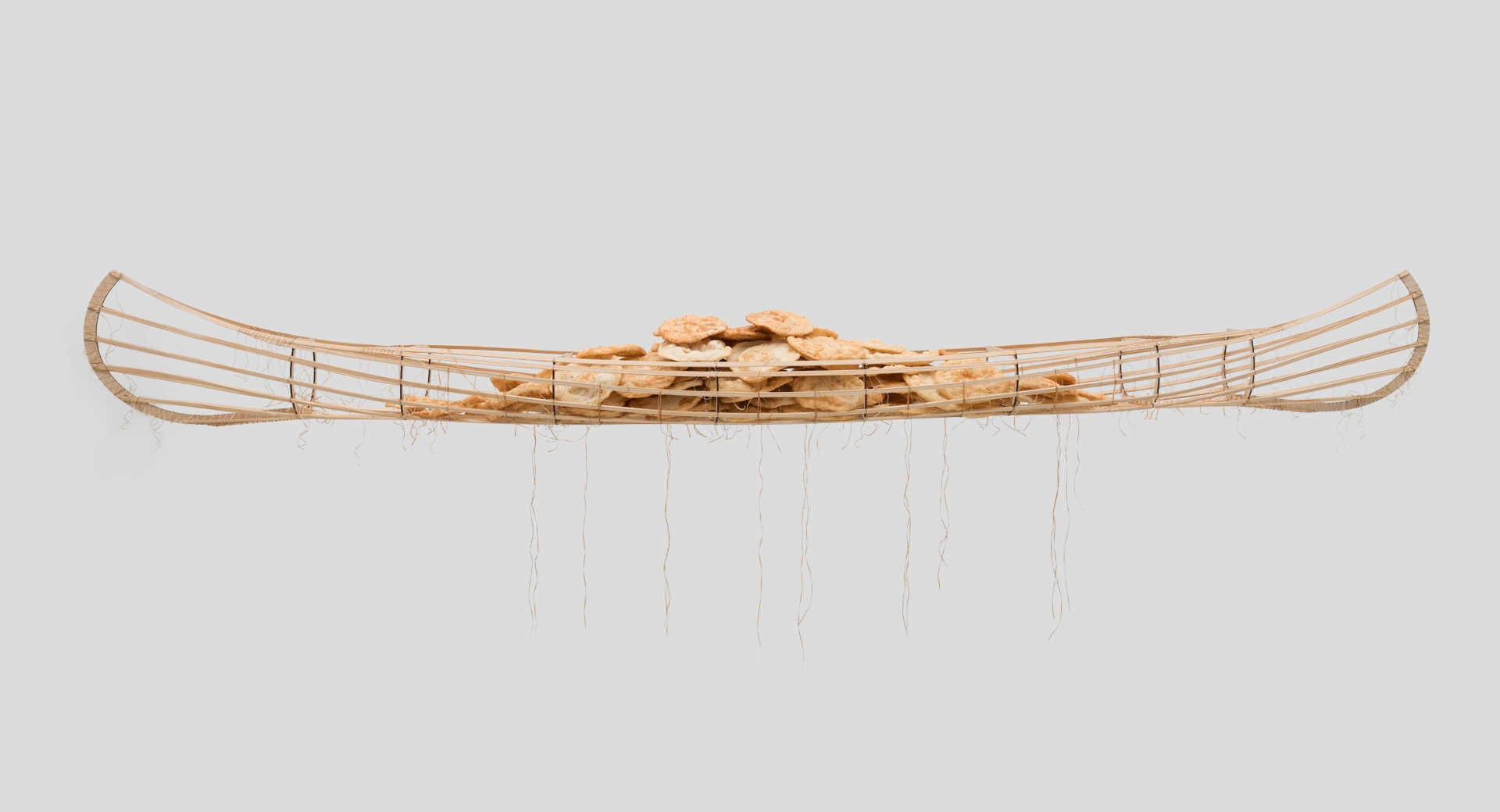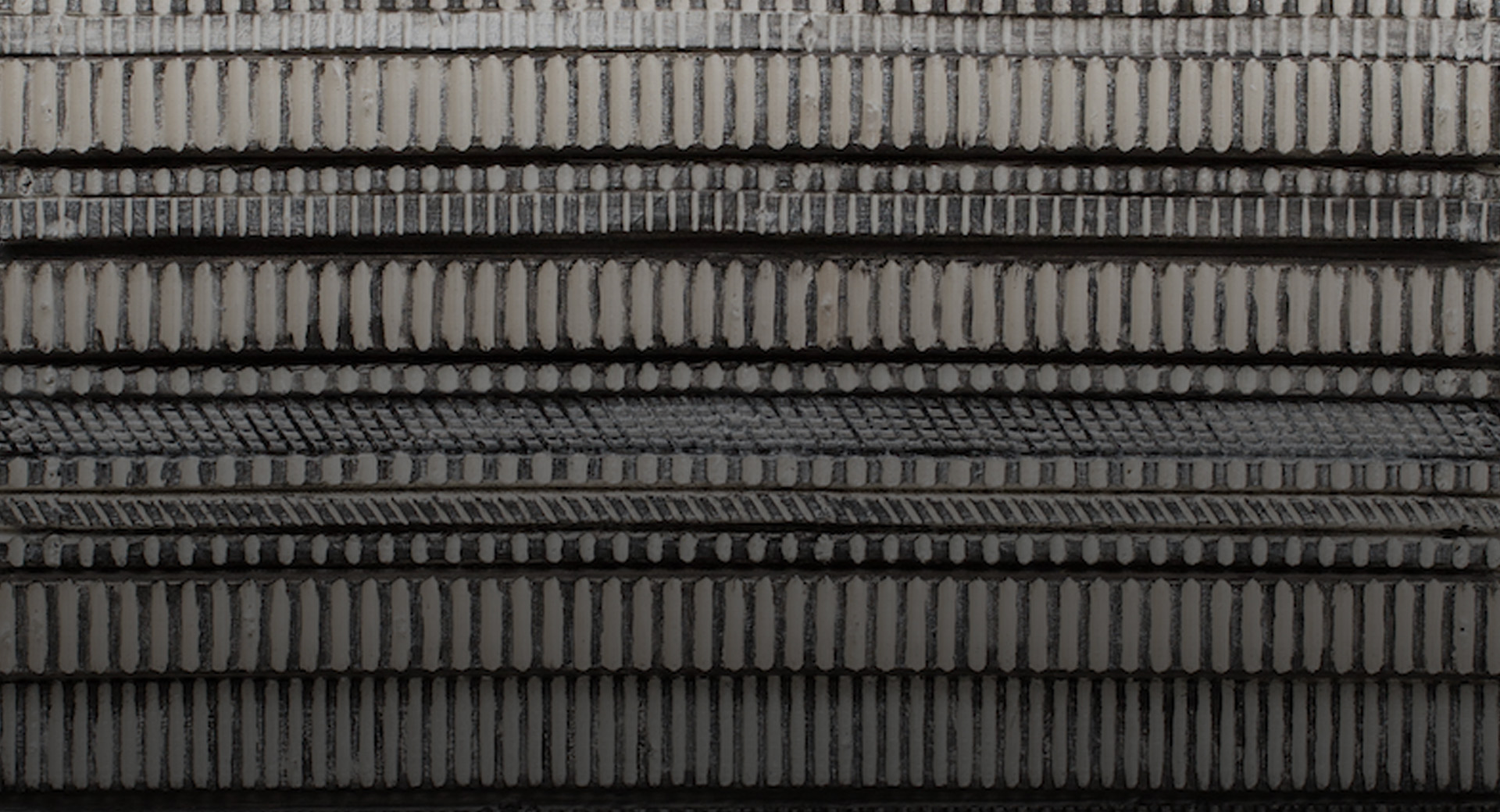Diana F. Pardue, chief curator
Diana Pardue: Nora, thank you so much for agreeing to discuss your ceramic sculpture Pearlene in the Heard’s permanent collection. You created this work in 1987 and the museum purchased it after it was included in the 1988 exhibition Earth, Hands, Life: Southwestern Ceramic Figures. What can you tell us about Pearlene of 1987? What would Pearlene of 2021 be like?
Nora Naranjo Morse: Originally, Pearlene was inspired by a composite of older cousins who were my idols as an awkward teenager. Older cousins can be the coolest role models ever, and I was completely captivated by my cousins’ mannerisms and bravado. My cousins’ skirts were always just a tad too tight, and they wore red lipstick—an act of “White Man’s” vanity their elders scolded. It was the early Sixties and my cousins represented the modern Native women—more self-confident and courageous navigating the White Man’s world. So all that scolding by elders fell on deaf ears.
Sometimes, my cousin lured me behind the shed near the corrals, and a stolen cigarette later, I was learning how to blow smoke rings into the air. I worshipped my naughty cousins; they represented all that was fun and a bit dangerous, and that was thrilling for an awkward teen. I should note, I did have a relative who was actually named Pearlene.

Pearlene was fearless because the women in her life showed her how to be that way. The Pearlene of 2021 is a bit world-worn, although she is still eager to experience and learn about the world she lives in. Pearlene is rooted to a Pueblo worldview that has been her North Star, her navigation throughout life. Her values are intact, but every now and then she enjoys meeting up behind the shed with other Pearlene types to share a smoke.
DP: Can you tell us how Pearlene fit with the other ceramics you were creating at that time?
NNM: The Pearlene series was made over several years, and during that time I was also exploring other mediums. I was writing. I wrote about people I knew and places I’d been to. And because Pearlene was a large part of my work, I wrote about her. I conjured up narratives incorporating people and places that Pearlene could be a part of—like the time Pearlene goesto Las Vegas. She eventually returned to the Pueblo a more worldly woman. The results became the sculpture titled Pearlene Teaching Her Cousins Poker. For several years there was a dynamic creative volley of words and clay that spilled out of me. Those were the years Pearlene found her voice. So while I was making Pearlene, I was also working with other concepts and materials and she just got included in whatever I was experiencing in life.
DP: In planning to discuss this with you, I had such a wonderful time reading your 1992 book Mud Woman: Poems from the Clay. In the introduction, which was so beautifully written, you mentioned that you were saying goodbye to Pearlene. How did you come to the decision to stop making that form?
NNM: A chapter closed when I decided to end the Pearlene series. Pearlene had become popular to the point I was asked by a businessman to keep producing Pearlenes. When I understood the ramifications of making Pearlene purely for money, I knew immediately I could not do that. And that may have been the moment I began honoring my creative integrity. So I made one last Pearlene. The scene: Pearlene sat on a couch with her boyfriend. She wore a feather boa and was naked. They looked happy.
The last time I saw Pearlene, she and her man were headed west to live in a museum. It was a bittersweet moment as I watched the art carrier close the van door; I knew the way I made art was about to change.
I now understand that the spirit and intention of Pearlene still lives on, just in another form.
DP: What are you working on currently?
NNM: I’ve been working with discarded materials for a few years now. I make sculptural forms from materials gathered on and off tribal lands. I work with plastic bags, wire and burlap chili [pepper] bags. I clean what I gather and spend time figuring out how to repurpose this new material into a reusable resource for my work. Right now I’m working on three sculptures made out of Walmart plastic bags, fencing wire and used burlap chili bags. They’re seated figures ranging in size from 15 to 18 feet in length. I’m in new territory with these sculptures; I’ve never made anything like this before. These sculptures have been inspired by Pueblo people who in the past have made their art from gathered materials, like the Depression-era jewelry made from battery casings and old 78 RPM records.
Working with discarded materials has enlightened me and given me the opportunity to learn more about environmental concerns facing our world.
DP: Is there a chance for another book of poetry?
NNM: I write almost every day. So I’m constantly gathering my words, stories and ideas. Maybe someday I’ll have another opportunity to write a book. Until then I continue to write.
DP: What advice would you give to an artist who is just beginning a career?
NNM: Follow your passion; it has value to your personal well-being.
Navigate your work/career with integrity.
Be fearless in your conviction.
Life—even the seemingly ordinary—has an endless supply of inspiration and knowledge.



